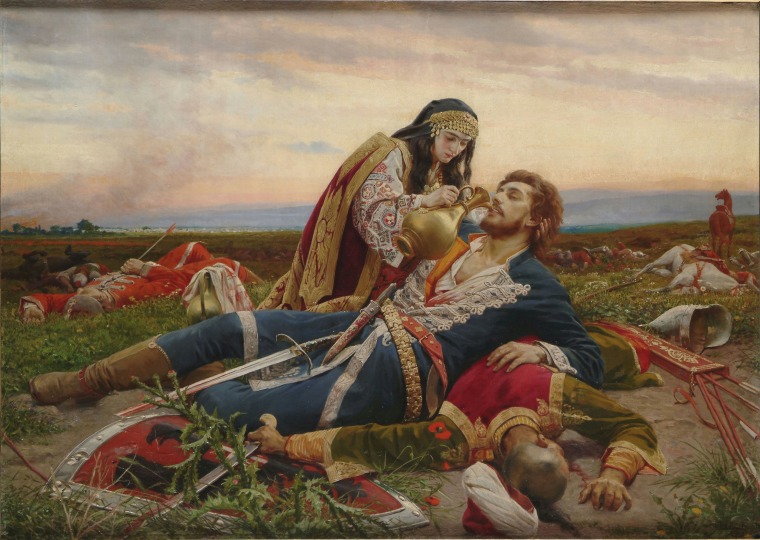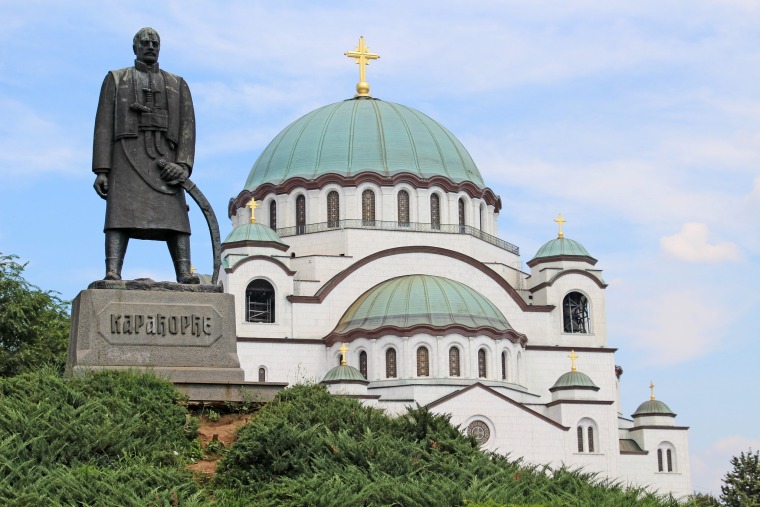

It will be Easter in Serbia in a few days and everyone’s thinking about egg colouring and cracking, the big Easter lunch they’ll spend surrounded by family and friends, and other well-known Easter traditions. But do you know about the Serbian custom of rubbing eggs on children’s cheeks? Or the drinking of the “komka” and jumping over an axe? Find out here!
We all can’t wait for the Easter bunny to come, for the egg tapping contests and the festive, delicious lunch we’ll enjoy together with our families and friends. But this day is even more interesting than that.
Uskrs or Vaskrs is the day when Jesus Christ came back to life and when his victory over death and exile is celebrated. It is a special day, one of two biggest in Christendom, so naturally there are many traditions that surround it. And, again, naturally, Serbia abounds in them.

On Easter, in Serbia, it is customary to get out of bed early, but not to go to bed before midnight. If you were to go to sleep before the clock strikes midnight, you would be sleepy and lazy until next Easter.
The first egg coloured in red is called “Čuvarkuća”, “čuvar”, “stražar”, “stražnik”, all meaning “guardian of the home”. It is believed to have a special power.
This egg was also buried in the yard or field as it was used for the protection of crops. Still, you had to be careful with it, as handling it wrong could’ve brought bad luck.
Another custom that involves this traditionally red egg, is to wash one’s face in the morning with water in which the Easter egg, basil, cornel and geranium have sat all night.

Children’s’ cheeks should be rubbed with a red egg so that they would be healthy and rosy all year.
On this day communion was held not only in churches but in nature as well. In Šumadija, according to custom, communion was taken by eating a hazel bush blossom or a hawthorn leaf, and going to confession.
In eastern and south Serbia, such a ritual was called “komkanjem”. Before lunchtime cornel and geranium leaves and pieces of the Easter cake were soaked in wine. All the members of the household had to drink the “komka” and then jump over and axe that stood on the doorstep and say the wishes they had for good luck and prosperity.

In some villages in South Banat, Bačka and Srem, people used to light candles on the windows of streets through which the procession passed.
Traditionally, lamb and beef are eaten on Easter as the lamb symbolises Jesus Christ himself and the ox being one of the 4 animals seen in the visions of the prophet Ezekiel and John the Apostle. If Easter happens to fall before Đurđevdan lamb meat wasn’t eaten.
Special breads are baked on Easter. In eastern Serbia and some parts of Vojvodina, loafs of bread with a whole egg (“kovržnjak”) placed on them are backed and then exchanged between friends.
On the day of Easter eggs and candy are hidden in yards and around the house, and then children try to find these hidden gifts.

The second day of Easter is called the “Pobusani ponedeljak”. On this day people in Serbia go to cemeteries where they leave a single red egg on each grave so that even those who passed away could enjoy the resurrection of Christ.
This day is also called “Vodeni ponedeljak”(meaning Watery Monday) because boys and young men throw water on girls and young women. On this Monday it is also considered to be good to leave a cracked Easter egg in a field so that it would be fertile. An Easter egg is also given to cattle to eat so that it would be healthy during the whole year.
If you happen to know any more interesting, fascinating or forgotten traditions, share them with everyone by leaving us a comment below!
Hristos voskrese!









